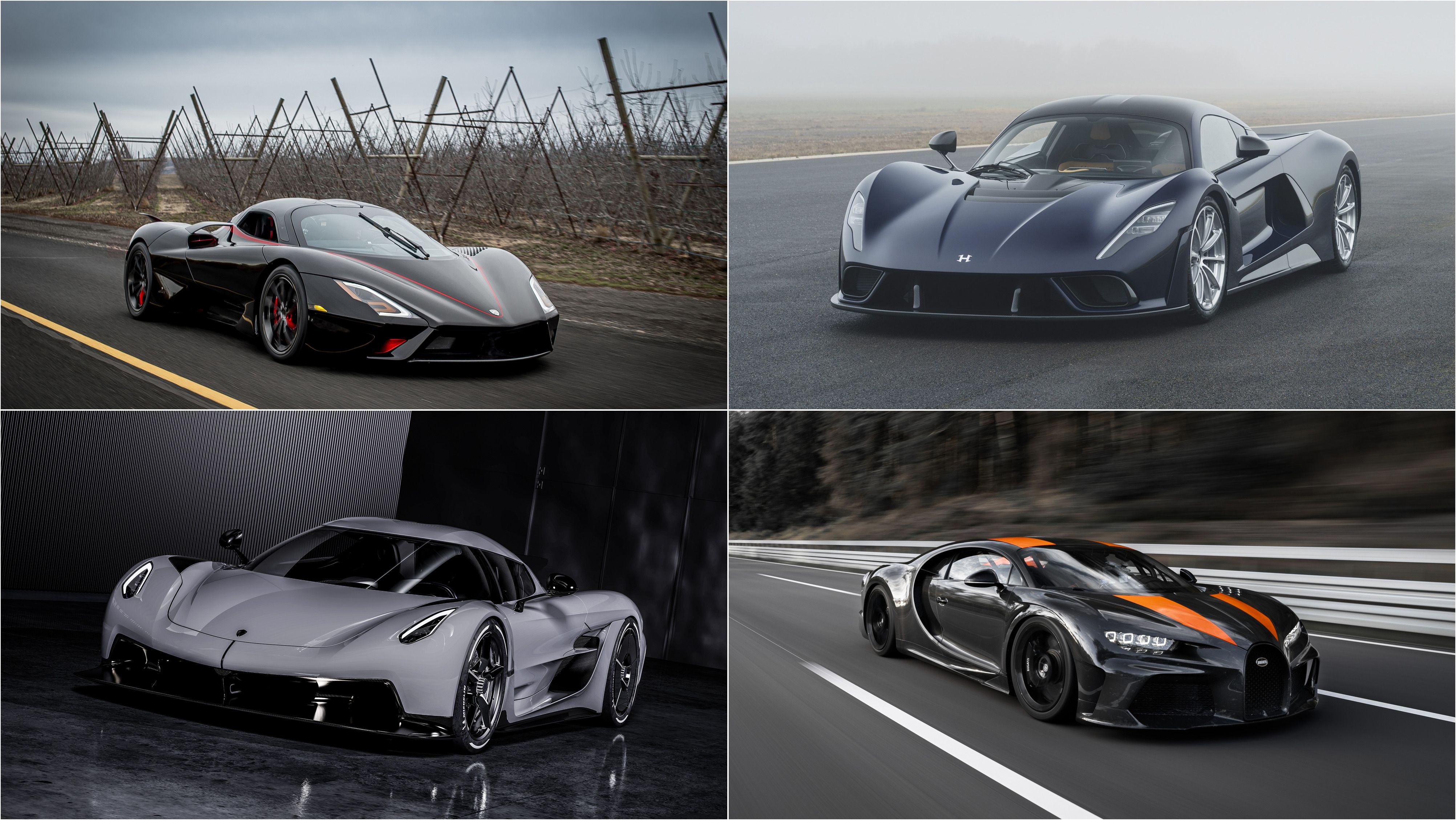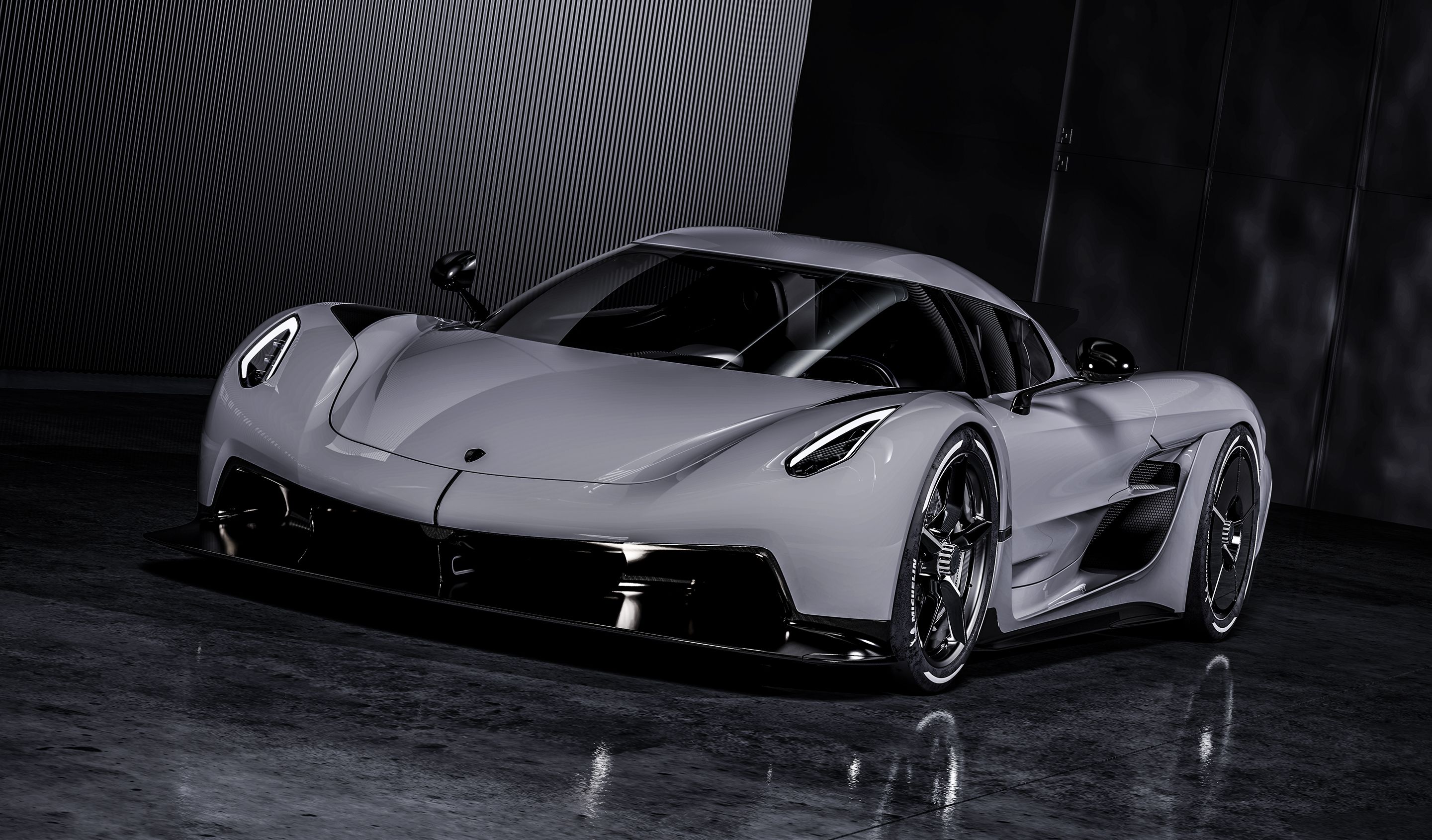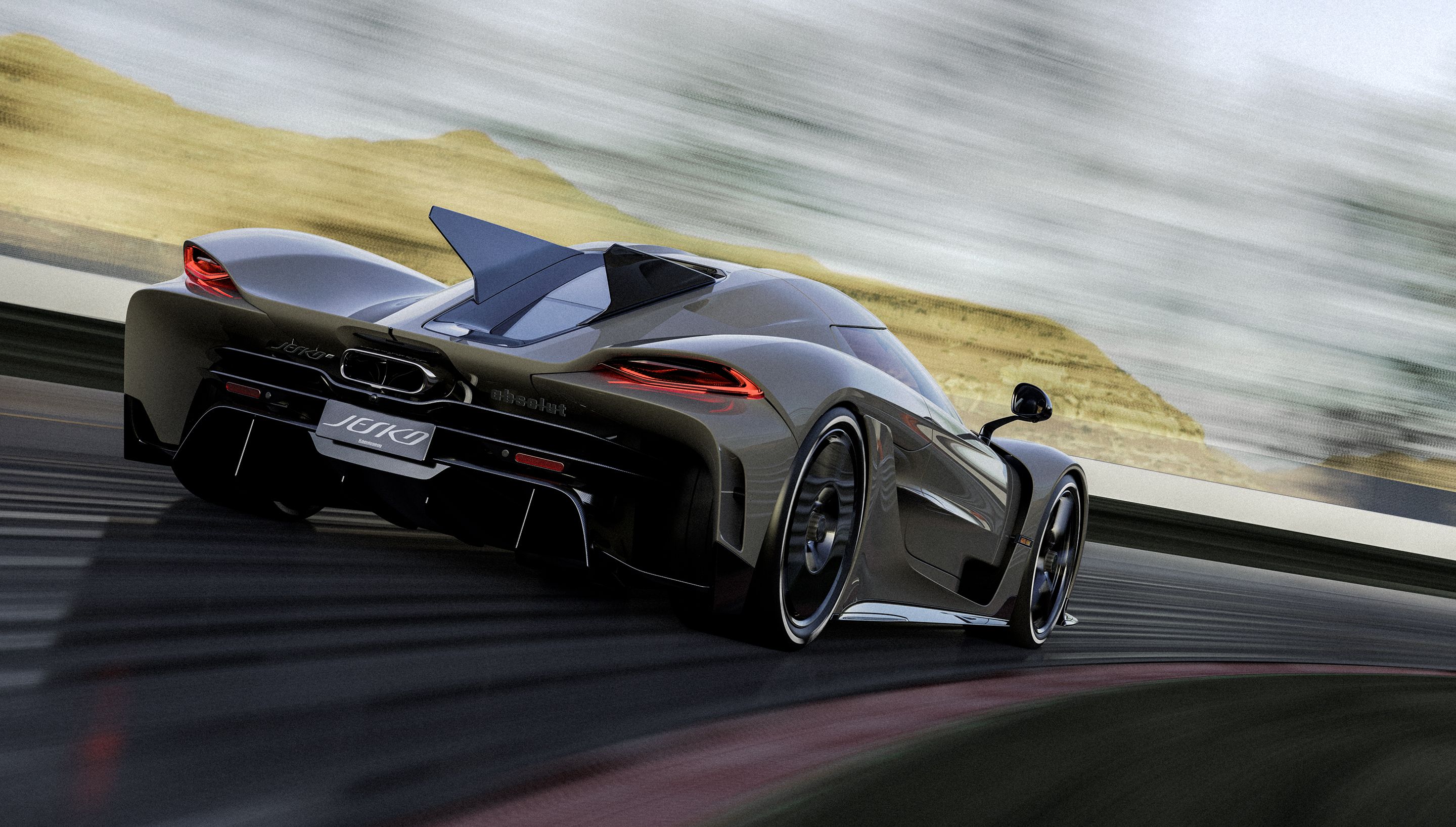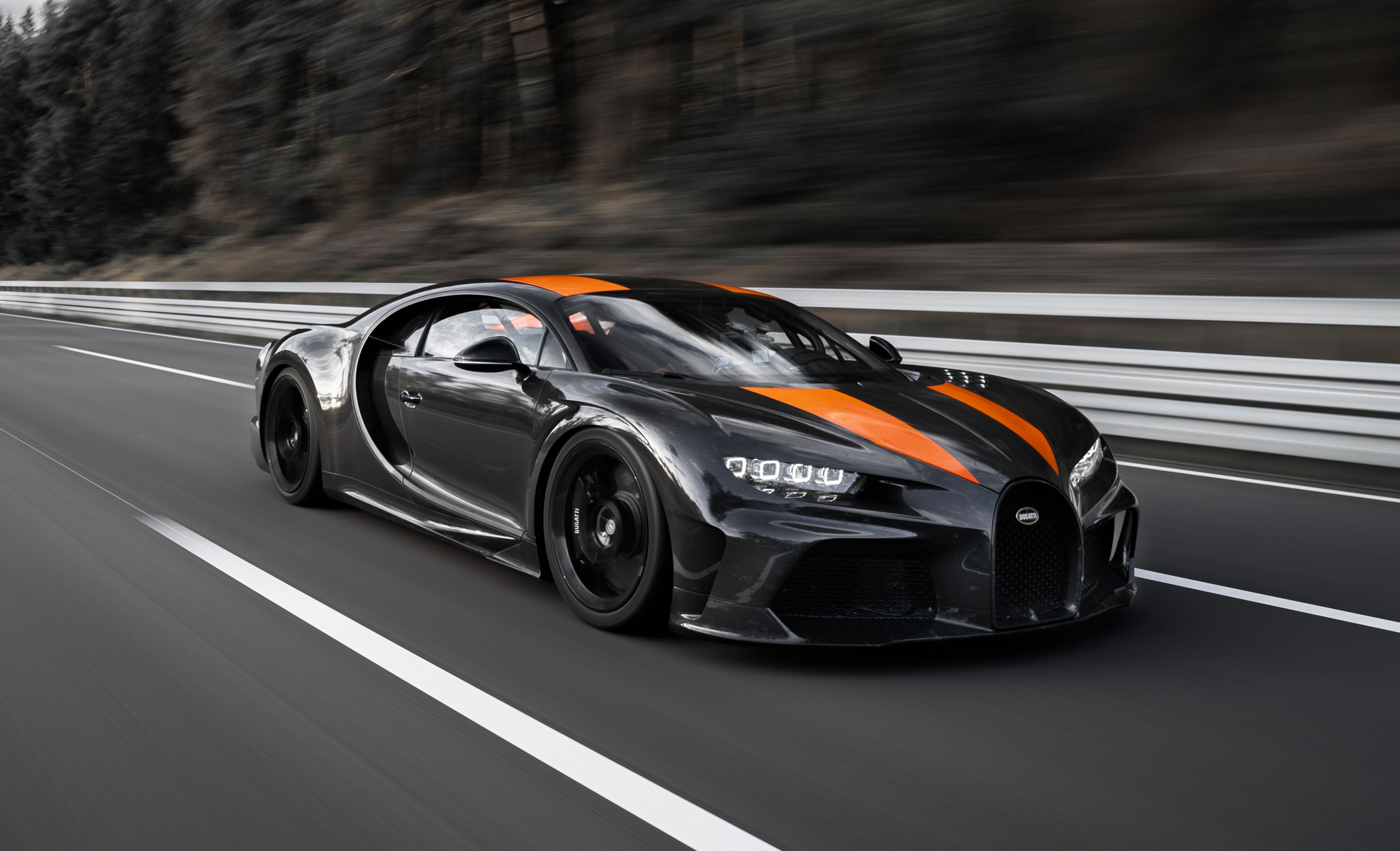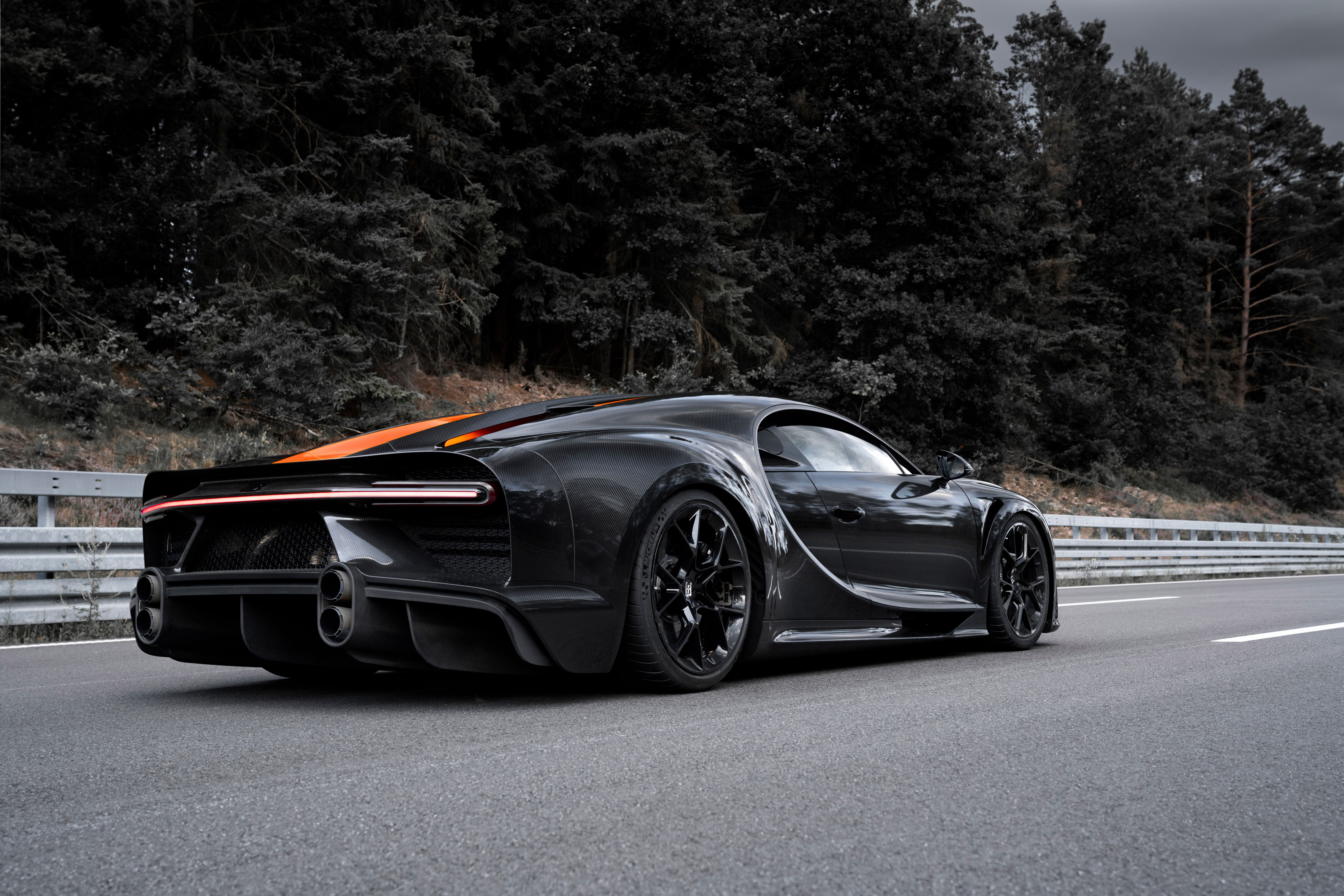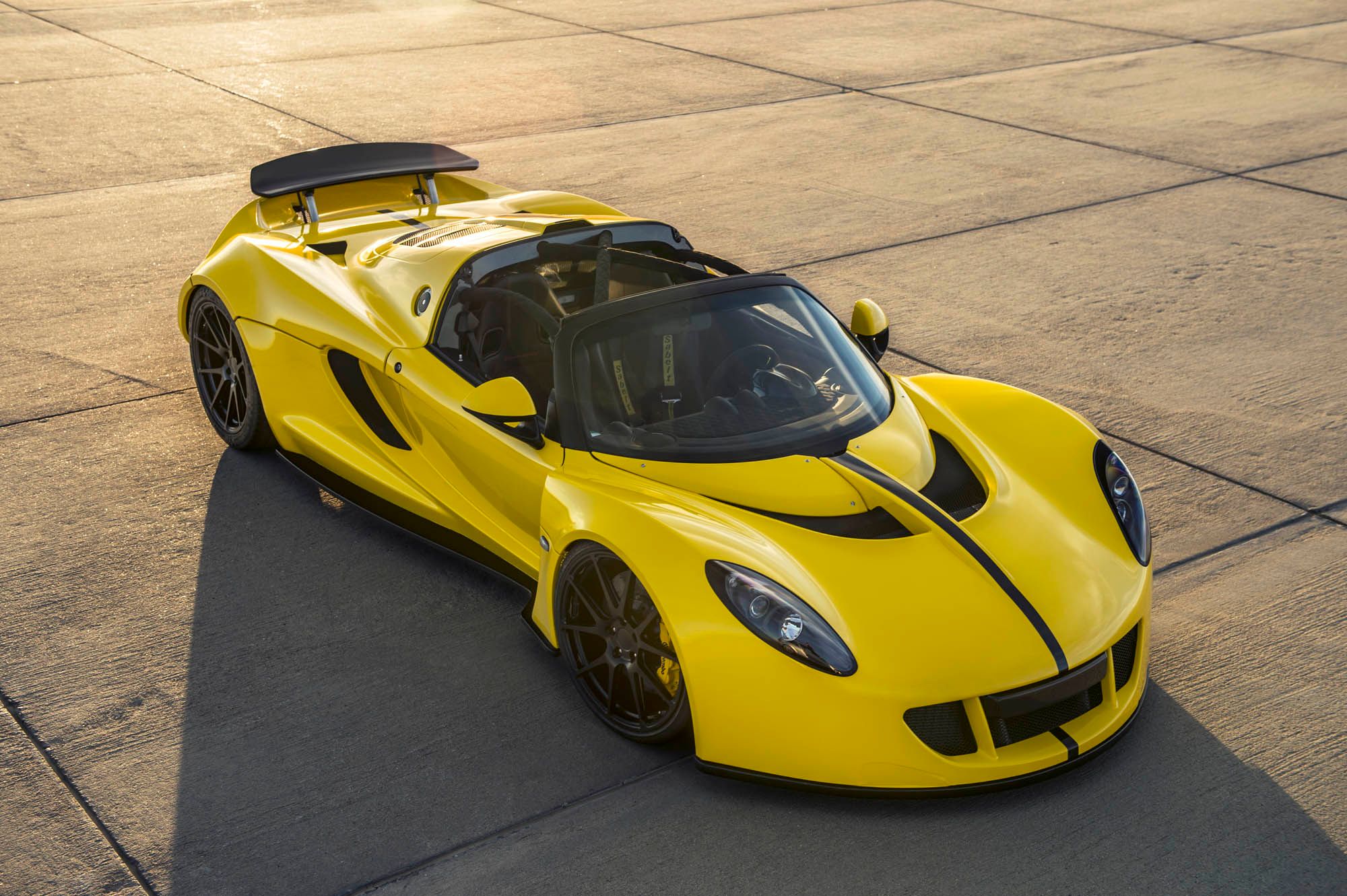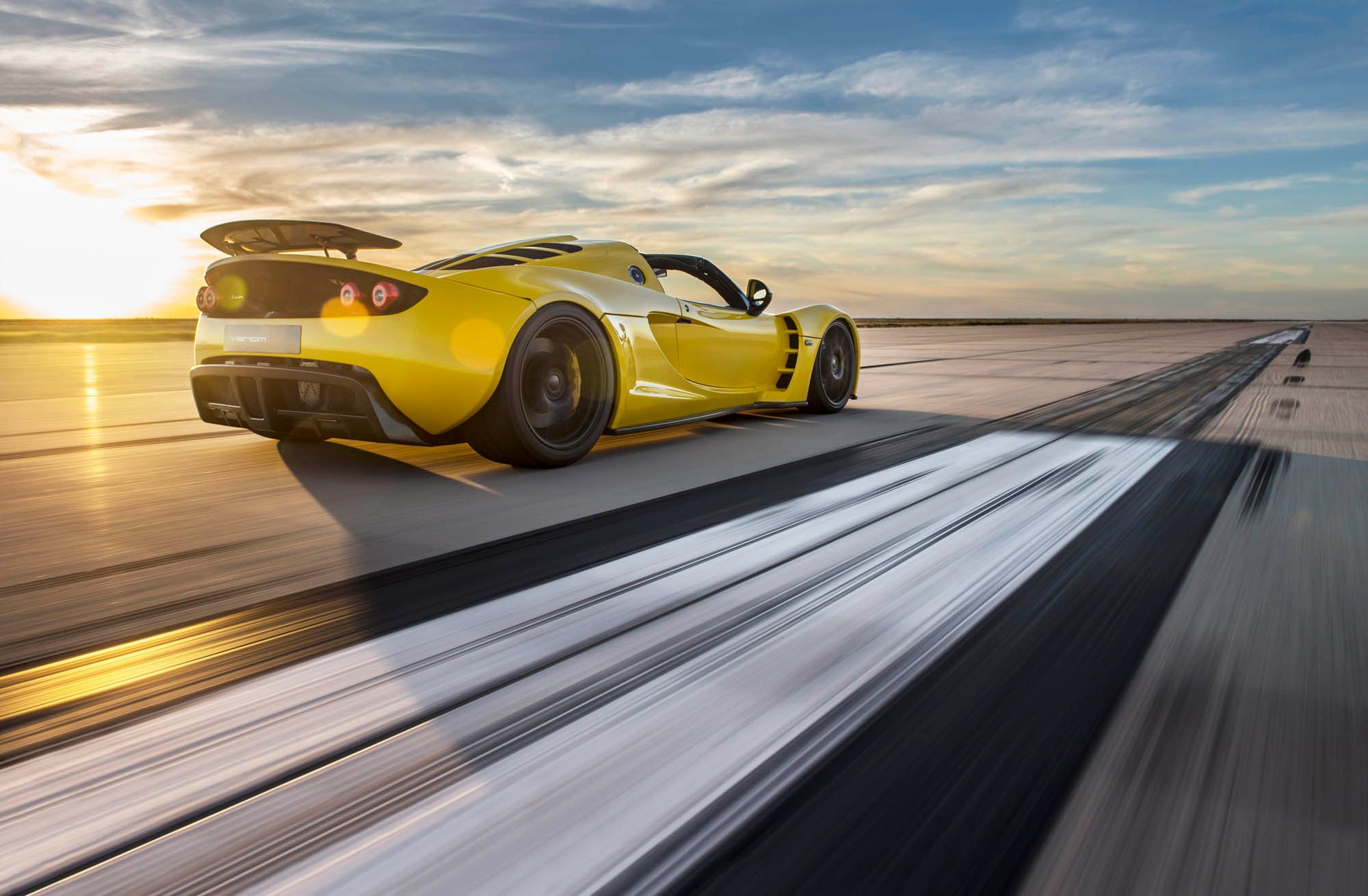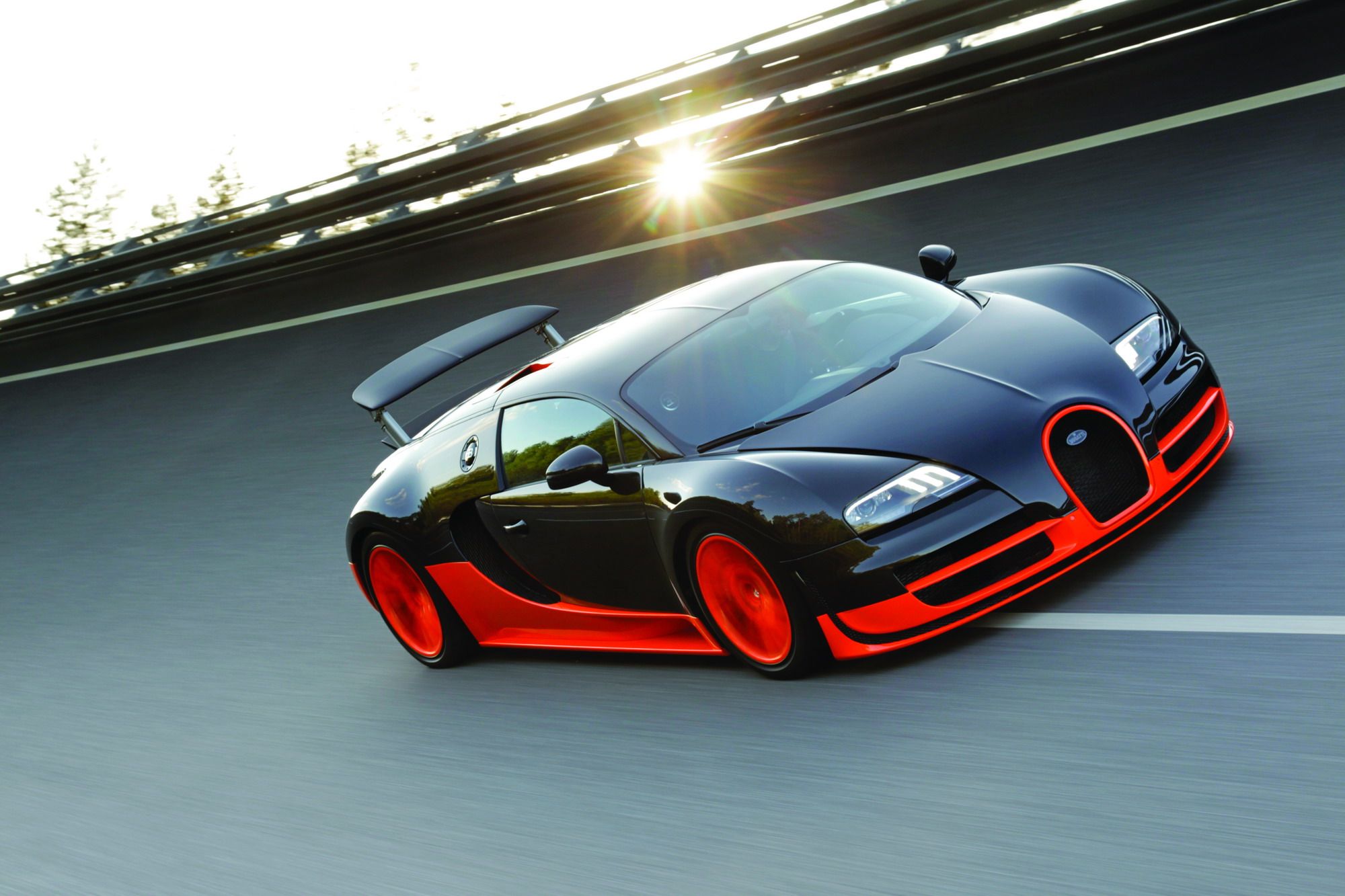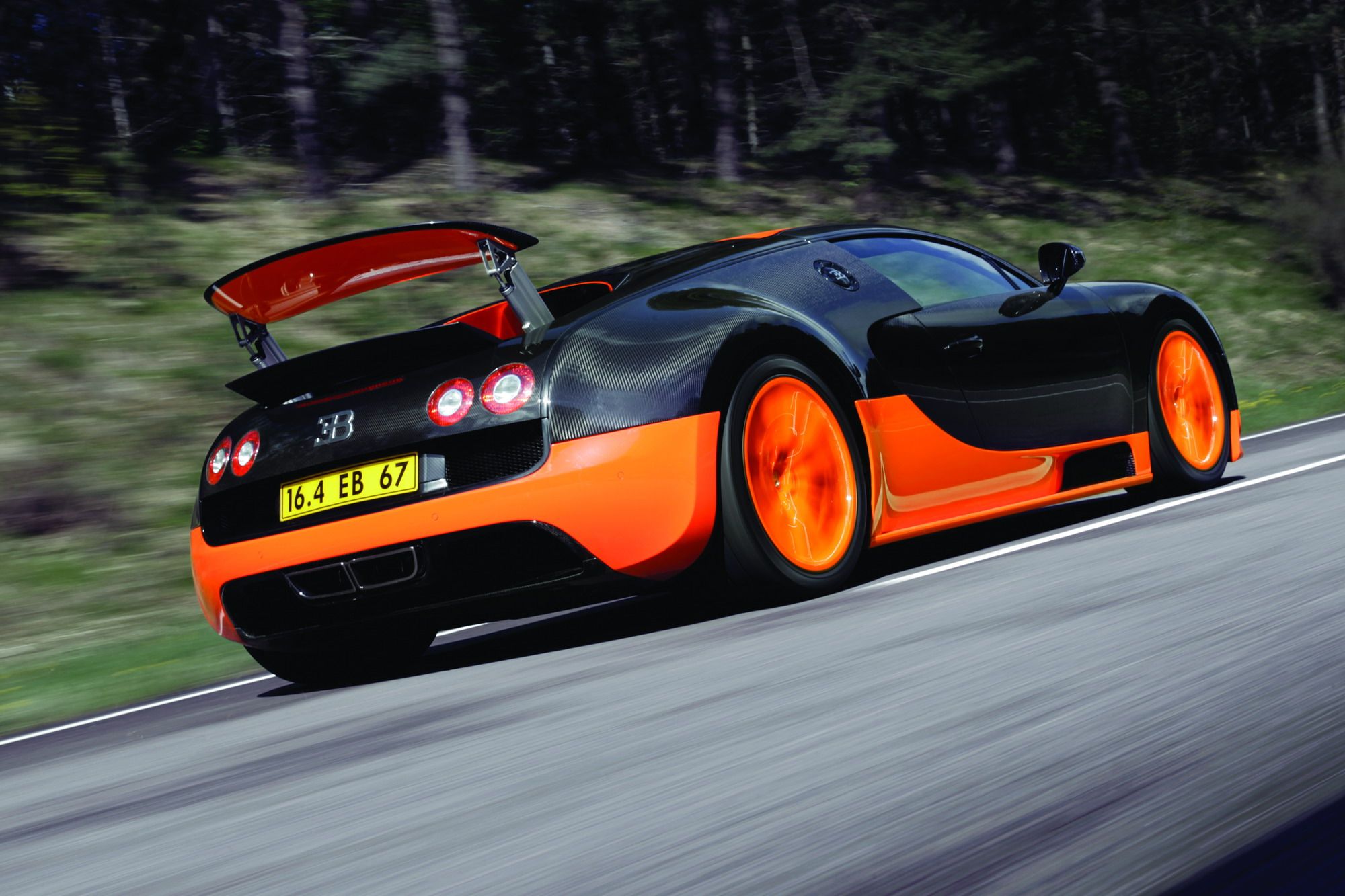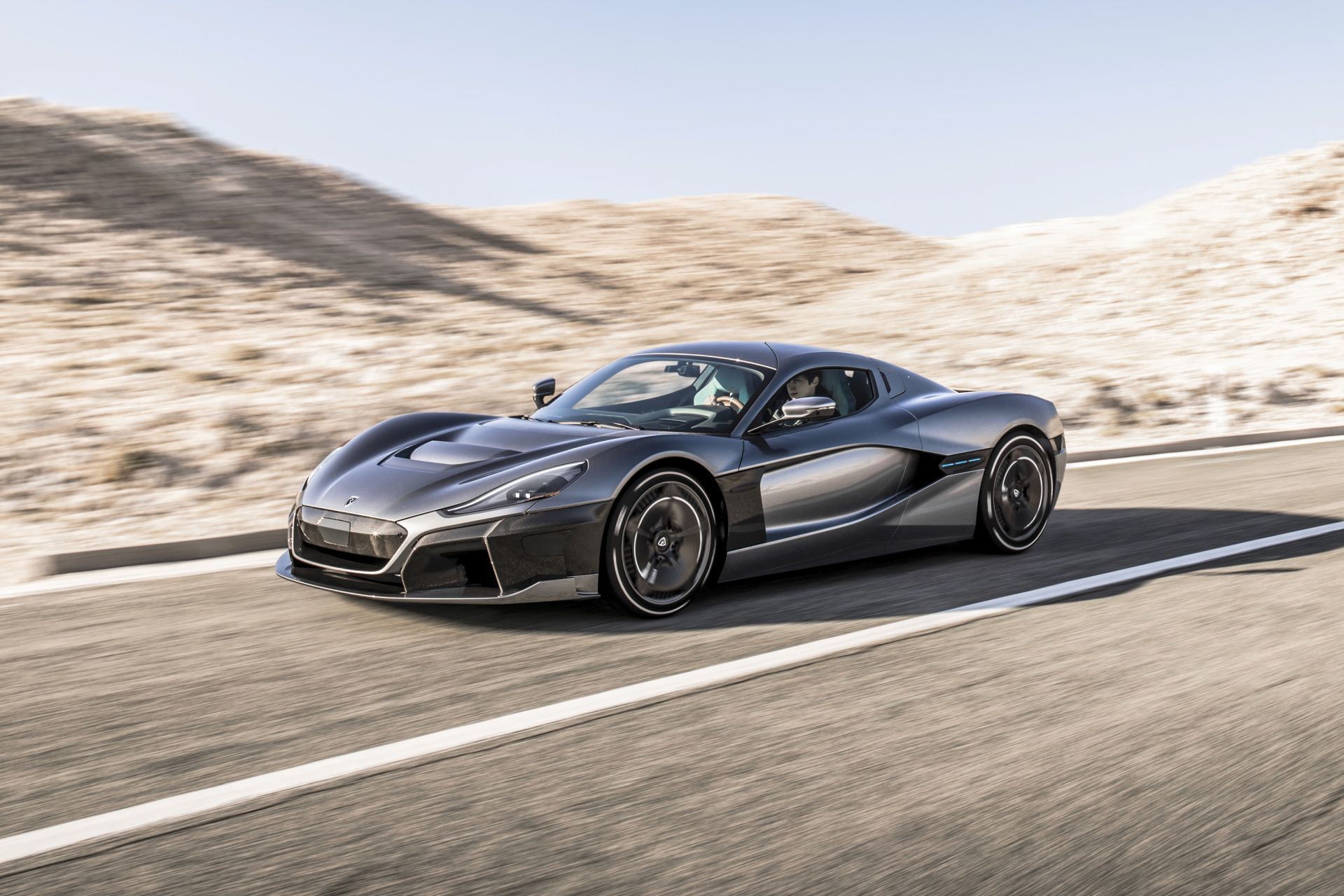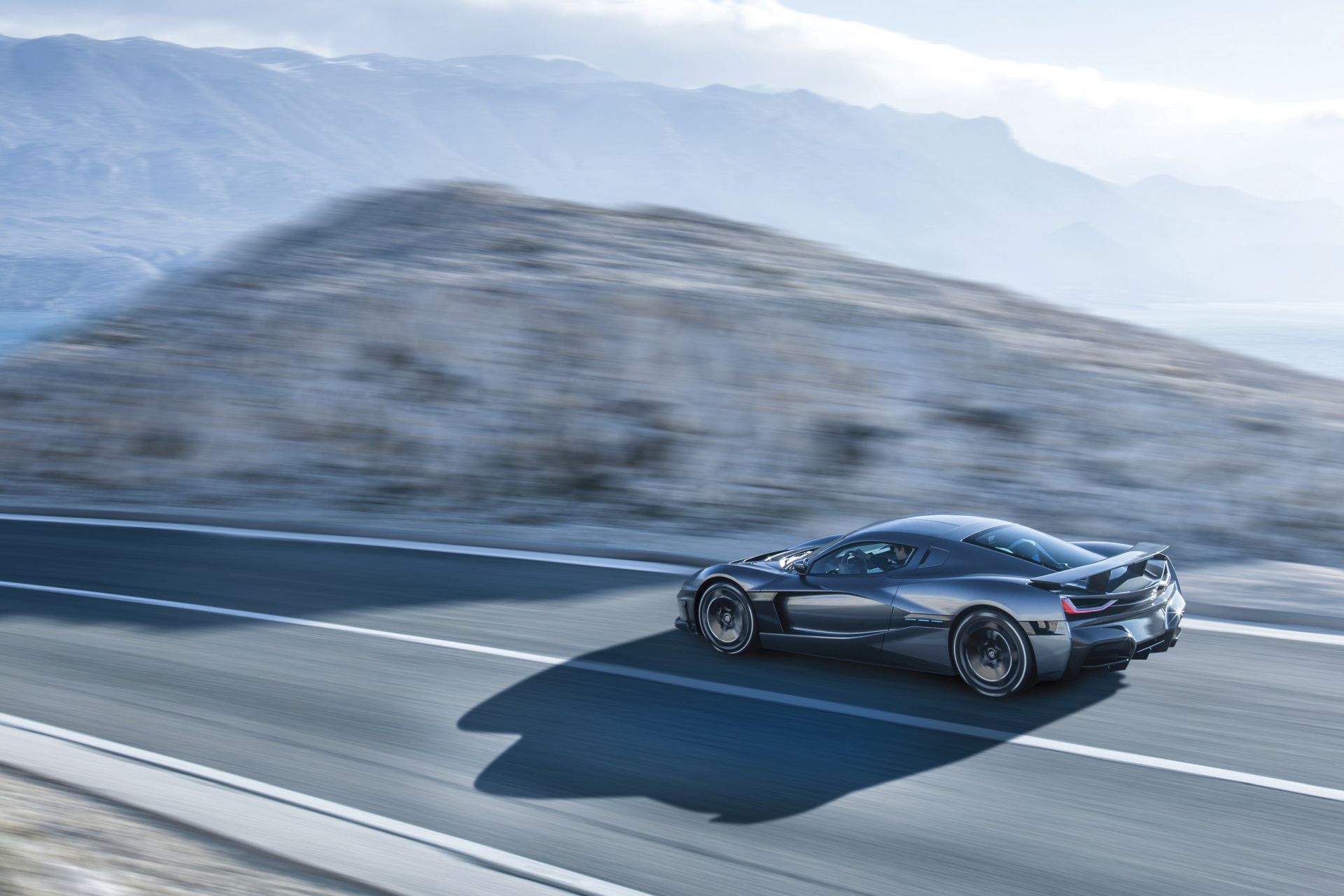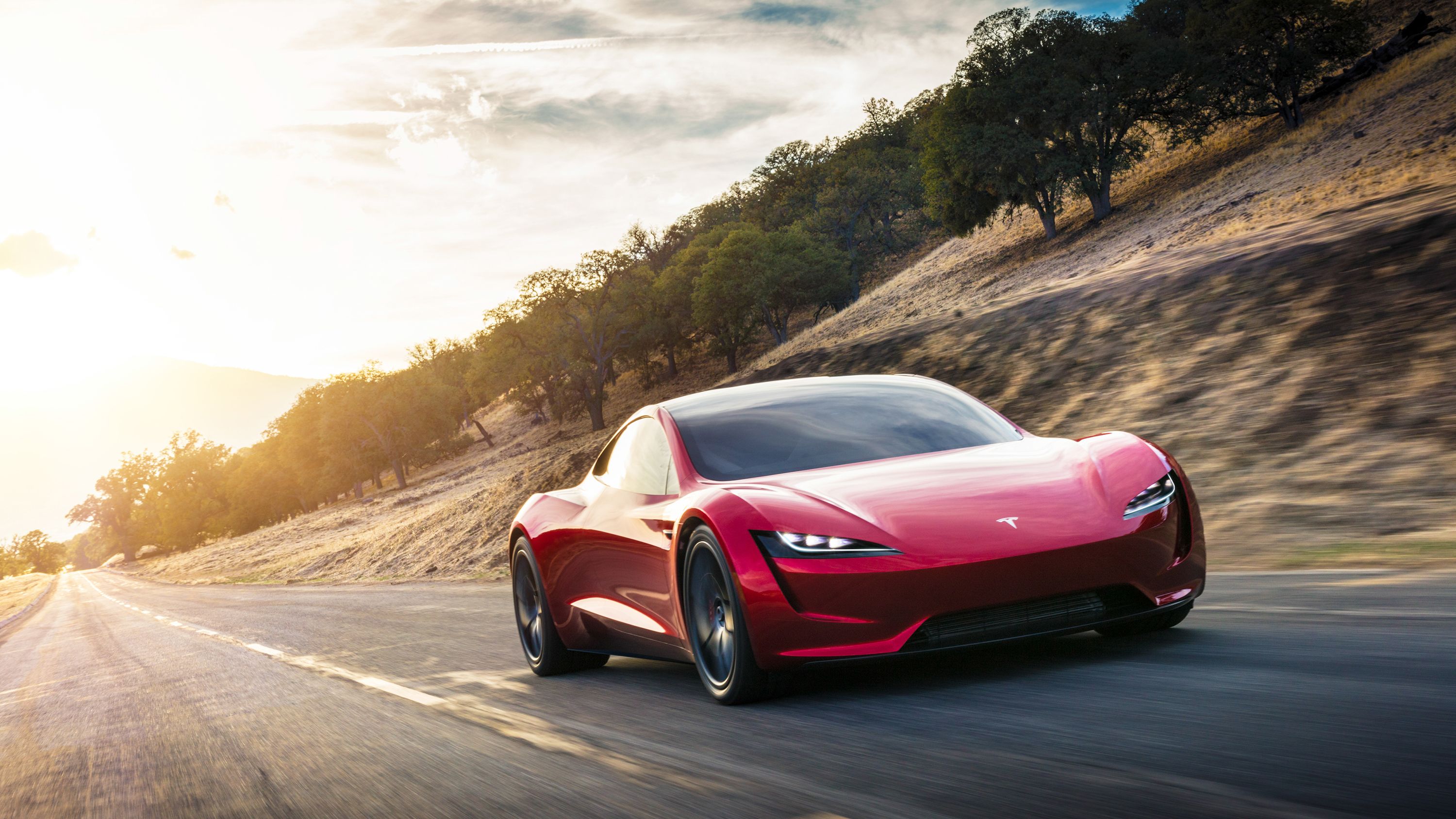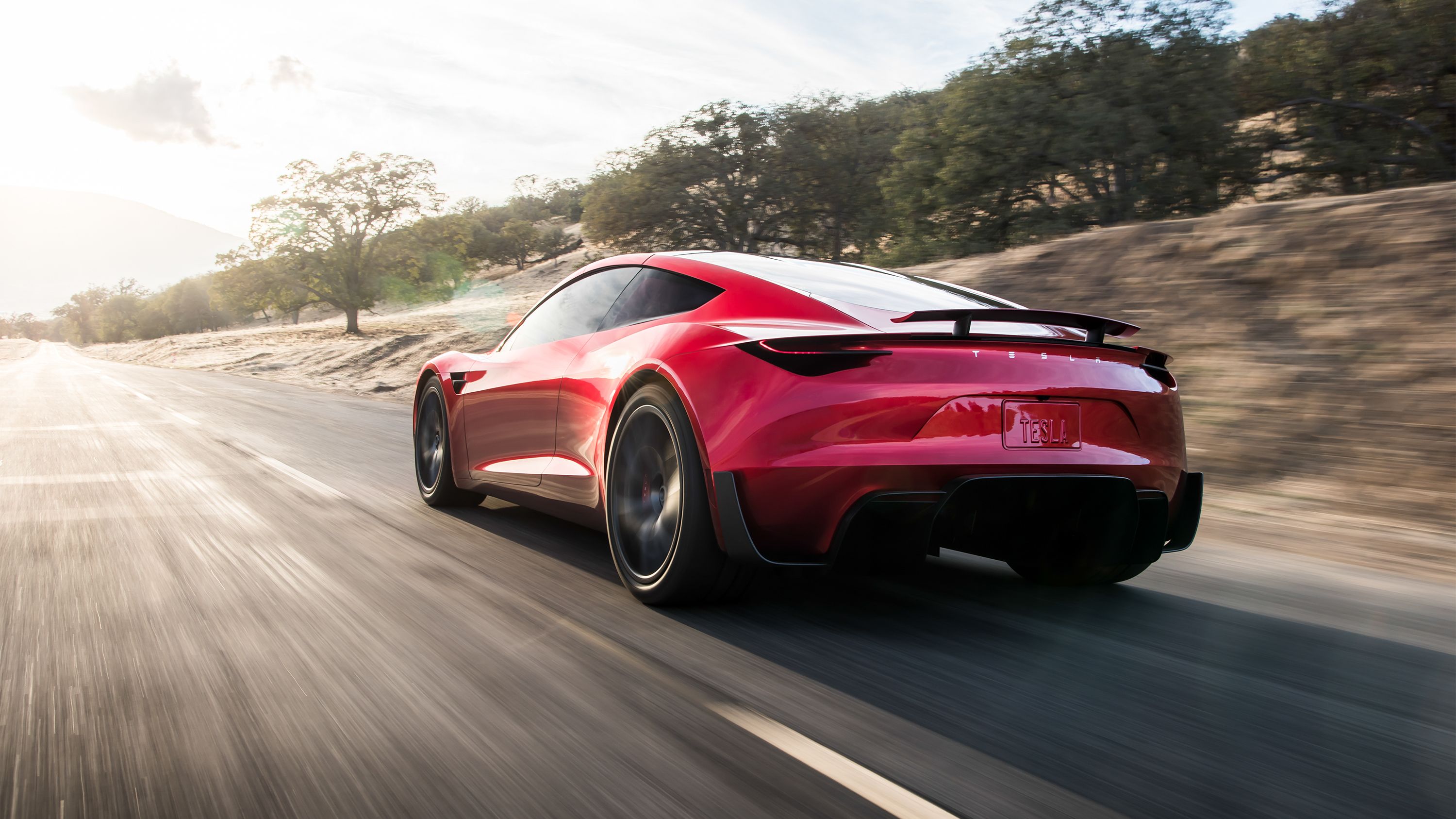If the NBA has Wilt Chamberlain’s 100 points and the Major League Baseball has Joe Dimaggio’s 56-game hit streak, the auto industry has the 300-mph top speed. These records and marks were once thought of as impossible to break, but recent advancements in technology and preparation have put them within reach, provided that a perfect storm of events happen.
Some automakers have made it their personal missions to be the first ones to emphatically say, and without any speck of controversy, that their car is the first car to legitimately hit a top speed of 300 mph. Depending on who you ask, that record has already been broken, but there are still debates on which model was the first to actually do it. Well, there are five models that are in contention for the record-setting claim, and there are five more that didn’t quite hit that mark during their time in the sun.
SSC Tuatara – 331 MPH
Of all the car companies that are vying to hit the 300-mph mark, SSC arguably made the biggest noise in 2020. The Washington-based supercar company made headlines last October when its 1,750-horsepower Tuatara hypercar recorded a jaw-dropping 331-mph one-way top speed run and a 316-mph two-way average run on a closed highway in Nevada.
At that time, it was thought that the Tuatara shattered the existing top speed record on its way to becoming the fastest production car in the world. SSC’s celebration, unfortunately, didn’t last. Scrutiny soon enveloped the Tuatara’s two-way run with skeptics coming out saying that the supercar didn’t even come close to reaching the speeds SSC claimed it did. Things turned for the worse when Dewetron, the company that made the speed-tracking equipment that SSC used in the Tuatara’s run, refuted SSC’s claims that the company was officially involved in the attempt, saying that it did not approve and validate any test result that SSC claimed it did.
The supercar company eventually came clean, admitting that there were some errors on the editing side that made the Tuatara’s run look fraudulent. The automaker did say that it plans to do another top speed run to clear its name and prove that the Tuatara is as fast as it claims to be. For whatever controversy that happened during the first run, what’s evident is that the 1,750-horsepower SSC Tuatara is a monster of a hypercar that, at the very least, is capable of hitting 300 mph in favorable conditions.
SSC Tuatara specifications
|
Engine/Powertrain: |
5.9-liter twin-turbo V-8 engine |
|---|---|
|
Horsepower: |
1,750 horsepower |
|
Torque: |
1,341 pound-feet |
|
0 to 60 MPH: |
2.5 seconds |
|
Top speed: |
331 mph |
Read our full review on the SSC Tuatara
Koenigsegg Jesko Absolut – 330+ MPH
It’s the fastest car created by the automaker whose other model — the Agera RS — is still recognized as the fastest production car in the world. Basically, the Jesko Absolut is faster than the Agera RS by a lot, or so Koenigsegg claims. The reality is that the Jesko Absolut hasn’t had a chance to prove Koenigsegg right. A top speed run is expected to happen sometime this year, but with the coronavirus pandemic still happening, it’s unclear if Koenigsegg will get that chance.
Still, that shouldn’t dissuade anyone into thinking that the Jesko Absolut isn’t a 300-mph hypercar. Here’s the truth: it absolutely has the potential to be. It’s billed as a high-speed streamliner, and there’s truth to that description. It’s powered by a twin-turbo V-8 engine that produces 1,600 horsepower to go with a drag coefficient of 0.278.
In other words, the Jesko Absolut was built for one purpose: to go really fast. Koenigsegg claims that in simulations, the Jesko is capable of hitting 330 mph “or something like that.” It’s great that it can hit that kind of speed in simulations, but we want to know if it can do it in real-world conditions.
Koenigsegg Jesko Absolut specifications
|
Engine/Powertrain: |
5.0-liter twin-turbo V-8 engine |
|---|---|
|
Horsepower: |
1,280 horsepower |
|
Torque: |
1,106 pound-feet |
|
0 to 60 MPH: |
1.9 seconds |
|
Top speed: |
Over 330 mph |
Read our full review on the Koenigsegg Jesko Absolut
Devel Sixteen – 348 MPH
If we’re talking about horsepower figures, the Devel Sixteen blows any of its rivals away, and it wouldn’t even be close.
Judging by those numbers alone, the Sixteen should be capable of hitting 300 mph with relative ease. The automaker hasn’t tested the supercar to reach the magical 300-mph top speed mark, but Devel did say that if everything goes according to plan and expectation, the Sixteen should be able to accelerate from 0 to 60 mph in just 1.8 seconds and hit a top speed of 348 mph. The latter, of course, would result in the Sixteen claiming the fastest production car title in the world. That said, all of this is just numbers being thrown around.
We won’t know if the Sixteen is everything it’s been hyped up to be until we actually see it in the wild, destroying poor asphalt roads. It’s going to need special tires to achieve that feat, but we’re confident that the automaker already has that part covered. After all, you’re not building this machine if there aren’t any tires in the world that can handle its ferocity.
Devel Sixteen specifications
|
Engine/Powertrain: |
12.3-liter quad-turbo V-16 engine |
|---|---|
|
Horsepower: |
5,007 horsepower |
|
Torque: |
3,757 pound-feet |
|
0 to 60 MPH: |
1.8 seconds |
|
Top speed: |
348 mph |
Read our full review on the Devel Sixteen
Hennessey Venom F5 – 311 MPH
The Hennessey Venom F5 has been talked about, dissected, and prodded over for years, but it wasn’t until a month ago when the American builder/tuner officially unveiled the first production prototype of the supercar it claims can hit 300 mph. The hype surrounding the Venom F5’s power and performance figures helped establish supercar’s appeal, but now that the real figures are here, it doesn’t look like the Venom F5 will be disappointing anybody anytime soon.
Hennessey’s preliminary simulations predict that the Venom F5 can hit 0 to 60 mph in 2.6 seconds, 0 to 124 mph in 4.7 seconds, and 0 to 250 mph in 15.5 seconds. The latter is more than twice as fast as the Bugatti Chiron and over seven seconds faster than the Koenigsegg Regera, the current title-holder of the totally made up 0-250-0 mph championship belt. It’s the top speed, though, that has everyone giggling at the bit to see the Venom F5 hit the road. Hennessey says that it can hit 311 mph, which is all we need to know about the Venom F5’s prospect as a challenger to the race to 300 mph.
Hennessey Venom F5 specifications
|
Engine/Powertrain: |
6.6-liter twin-turbo V-8 engine |
|---|---|
|
Horsepower: |
1,792 horsepower |
|
Torque: |
1,192 pound-feet |
|
0 to 60 MPH: |
2.6 seconds |
|
Top speed: |
311 mph |
Read our full review on the Hennessey Venom F5
Bugatti Chiron Super Sport – 304.7 MPH
Imagine you’re Bugatti and you already have a hypercar that’s capable of ridiculous speeds. But you’re not satisfied and you go and create something that’s even faster than what you already have. I can’t say it with full certainty, but I imagine that’s what the conversation was like that led to the creation of the Chiron Super Sports 300+.
Basically, the Bugatti Chiron Super Sports 300+ is an evolved version of the Chiron hypercar, one that’s capable of breaking the 300-mph speed threshold. Truth be told, it already accomplished that feat when it reached a top speed of 304.77 mph on the Volkswagen Group’s Ehra-Lessien test track in Germany. Not only did the Chiron Super Sport 300+ break the 300-mph threshold, but it proved that reaching that kind of speed on four wheels is possible.
It didn’t set the official record because it was a one-way run and the model that was used to break 300 mph was a “near-production prototype,” but the real record doesn’t mean as much as the fact that Bugatti finally achieved what it set out to do all these years. Now if it really wants to cement its place in the history books, it needs to do a two-way run and average 300 mph from those runs using a full-spec production model. Seems easy enough, right, Bugatti?
Bugatti Chiron Super Sports 300+ specifications
|
Engine/Powertrain: |
8.0-liter quad-turbo W-16 engine |
|---|---|
|
Horsepower: |
1,600 horsepower |
|
Torque: |
1,180 pound-feet |
|
0 to 60 MPH: |
2.3 seconds |
|
Top speed: |
300.4 mph |
Read our full review on the Bugatti Chiron Super Sport
Koenigsegg Agera RS – 277.8 MPH
Care for a little slice of irony pie? The Koenigsegg Agera RS is the current holder of the fastest production car in the world title, and yet, it’s not one of the hypercars that you talk about when discussing challengers to the 300-mph top speed race. A lot of that has to do with timing; the Agera RS was introduced in 2015 and became the fastest production car in the world in 2017 when it clocked a two-way average top speed of 278 mph, eclipsing the record previously held by the Bugatti Veyron Super Sport.
The Bugatti Chiron Super Sports 300+ already achieved that feat in a one-way run, but since a hypercar needs a two-way run — the top speed is taken from the average of those two runs — to officially set a top speed mark, the record is still the Agera RS’ to lose. It’s just too bad it’s not around to compete against the new guns, though its successor, the Jesko Absolut is regarded as one of the few hypercars that can break the Agera RS’s top speed record. If you can’t defend the record, might as well keep it in the family, right?
Koenigsegg Agera RS specifications
|
Engine/Powertrain: |
5.0-liter twin-turbo V-8 engine |
|---|---|
|
Horsepower: |
1,341 horsepower |
|
Torque: |
1,000 pound-feet |
|
0 to 60 MPH: |
2.9 seconds |
|
Top speed: |
277.8 mph |
Read our full review on the Koenigsegg Agera RS
Hennessey Venom GT – 270.49 MPH
Before Hennessey focused its time, attention, and resources on the Venom F5, the Texas-based car builder/tuner rolled out a supercar that could 270 mph. The Venom GT is, by all accounts, the predecessor to the F5, and when it was around, it was one of the fastest cars in the world, at least depending on who you asked. Yes, it’s true.
The run was as incredible as it was breathtaking. But since the Venom GT achieved that top speed on a one-way run, it wasn’t recognized as the fastest production car in the world. That allowed the Bugatti Veyron Super Sport, which posted a two-way average top speed of 267.856 mph to keep a record that it had held since 2010. It wasn’t until 2017 when the Koenigsegg Agera RS arrived that the Veyron Super Sport’s record was officially broken, but even if the Venom GT didn’t actually set that record, it doesn’t discount from what the American supercar was capable of on the open road.
In many ways, the Venom GT’s success was what spurred Hennessey to double down and create a legitimate 300-mph supercar. Years of development soon followed, leading to the arrival of the Venom F5.
Hennessey Venom GT specifications
|
Engine/Powertrain: |
7.0-liter twin-turbo V-8 engine |
|---|---|
|
Horsepower: |
1,244 horsepower |
|
Torque: |
1,155 pound-feet |
|
0 to 60 MPH: |
2.4 seconds |
|
Top speed: |
270.49 mph |
Read our full review on the Hennessey Venom GT
Bugatti Veyron Super Sport – 267.8 MPH
The Bugatti Veyron Super Sport and the Koenigsegg Agera RS have a lot in common as far as their inclusion in this list. Like the Agera RS, the Veyron Super Sport isn’t a 300-mph supercar because it hit the market at a time when the thought of a 300-mph supercar was still far-fetched, if not impossible. But even if it didn’t come close to hitting the 300-mph speed threshold, the Veyron Super Sport will go down in history as one of the fastest production cars ever. It even held that title for seven years — an eternity in the auto world — before the Agera RS arrived and knocked the Bugatti down from its pedestal.
It’s highly unlikely that we’ll see Bugatti dust off the Veyron Super Sport for one last glorious run to 300 mph, but even if that doesn’t happen, nobody’s going to look at the Veyron Super Sport and say that Bugatti didn’t squeeze all the performance juice it could. Bugatti did, and a seven-year run as the fastest production car in the world proves that.
Bugatti Veyron Super Sport specifications
|
Engine/Powertrain: |
8.0-liter quad-turbo W-16 engine |
|---|---|
|
Horsepower: |
1,184 horsepower |
|
Torque: |
1,106 pound-feet |
|
0 to 60 MPH: |
2.4 seconds |
|
Top speed: |
267.8 mph |
Read our full review on the Bugatti Veyron Super Sport
Rimac C_Two – 258 MPH
The Rimac C Two is more than just the follow up to Rimac’s nutty Concept One supercar. The C Two represents a new age in the development of electric supercars, a segment that only a handful of models are a part of. The C Two is powered by four liquid-cooled permanent magnet synchronous electric motors placed on each wheel.
It is, literally, one of the fastest accelerating cars ever made. Unfortunately, that bursting acceleration doesn’t translate to a 300-mph top speed, and the reason for that boils down to one thing: weight. The C Two weighs 4,300 pounds. It’s 1,200 pounds heavier than the Koenigsegg Jesko, and all the weight it’s carrying doesn’t translate to a car that’s capable of reaching sustained speeds eclipsing 300 mph.
Still, even with that supposed “handicap,” you’d be wrong to think that the C Two isn’t one of the most mental electric hypercars in the market today. That it can even hit a top speed of 258 mph with the weight it’s carrying speaks to its stature as a technical and engineering marvel from Rimac.
Rimac C_Two specifications
|
Engine/Powertrain: |
Four electric motors / 120 kWh battery pack |
|---|---|
|
Horsepower: |
1,888 horsepower |
|
Torque: |
1,696 pound-feet |
|
0 to 60 MPH: |
1.8 seconds |
|
Top speed: |
Over 258 mph |
Read our full review on the Rimac C_Two
Tesla Roadster – 250 MPH
Now that Elon Musk has overtaken Jeff Bezos as the richest man in the world, the Tesla founder and CEO definitely has a lot to be happy about. Now imagine the look on his face when the new Tesla Roadster — it’s scheduled to arrive in 2022 — finally hits the road.
The model is still under development, but the early promises of skin-melting performance aren’t lost on anyone who’s been waiting a while to see what the Roadster is capable of on asphalt roads. It’ll be powered by three electric motors — one in front, two at the back — to go with a massive 200-kWh battery pack that’ll allow it to accelerate from 0 to 60 mph in just 1.9 seconds and hit a top speed exceeding 250 mph. The latter is the intriguing number as far as the purpose of this list is concerned.
Tesla’s been quiet on the possibility that the Roadster could be a 300-mph electric supercar, but knowing Musk, it’s a possibility that you can’t just discount, right? For now, we’ll say it can’t but we do reserve the ability to change our answer once the Roadster shows out.
Tesla Roadster specifications
|
Engine/Powertrain: |
Three electric motors / 200 kWh battery pack |
|---|---|
|
Horsepower: |
n/a |
|
Torque: |
n/a |
|
0 to 60 MPH: |
1.9 seconds |
|
Top speed: |
Over 250 mph |
Read our full review on the Tesla Roadster

